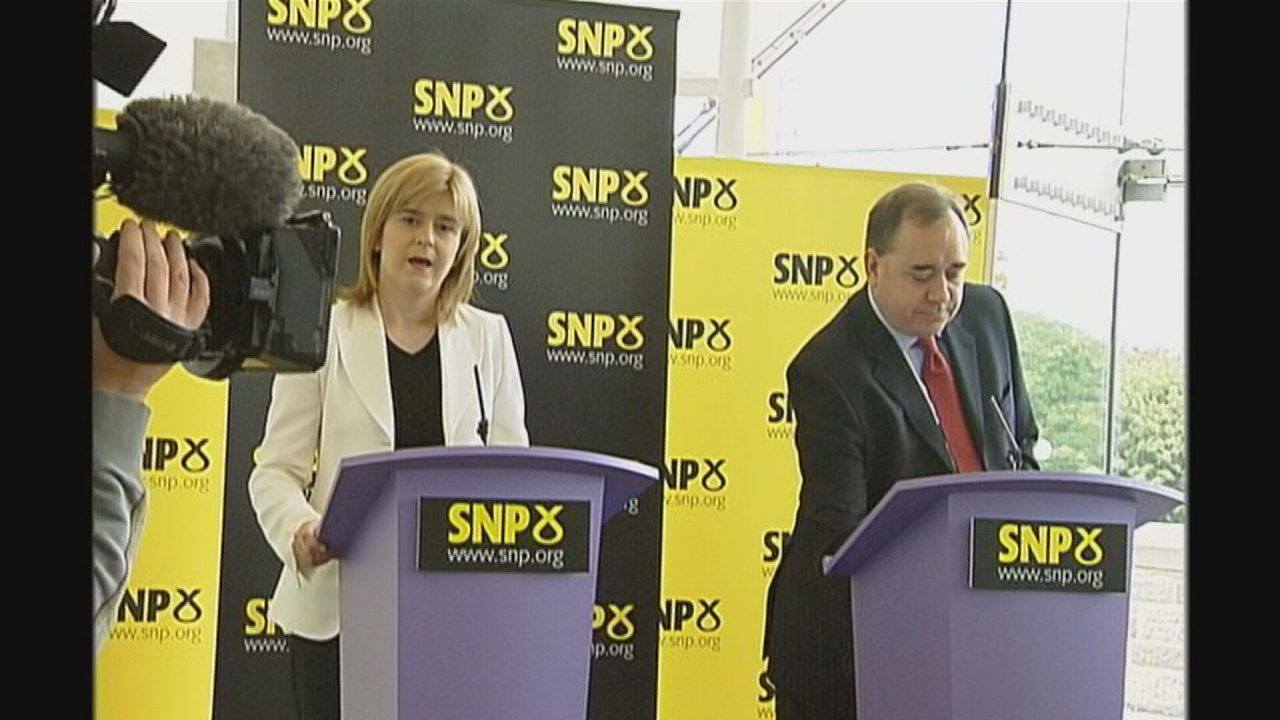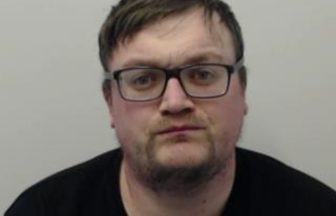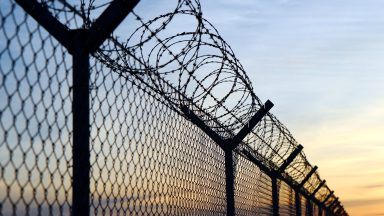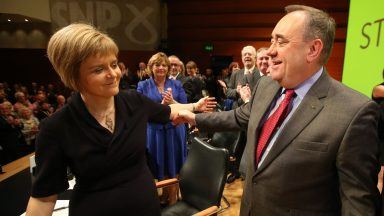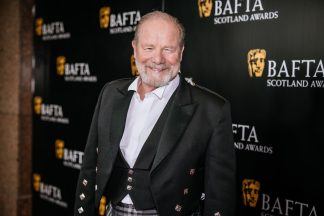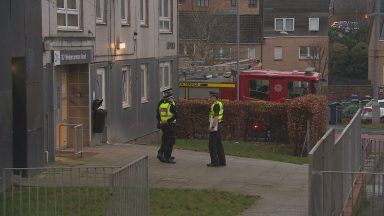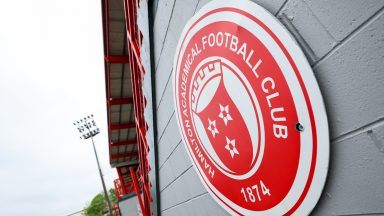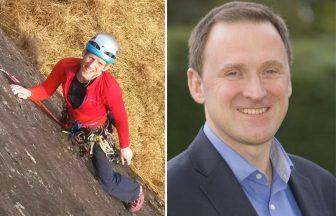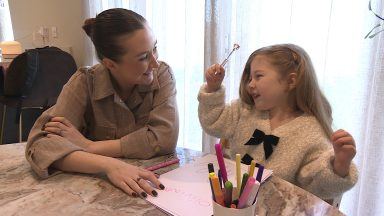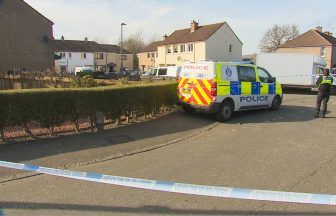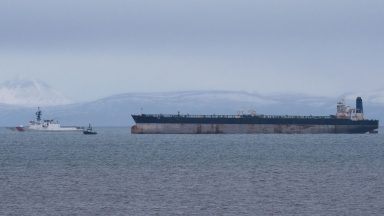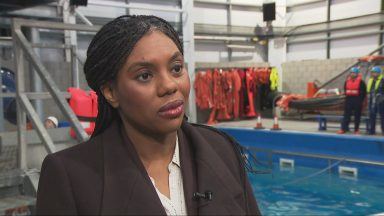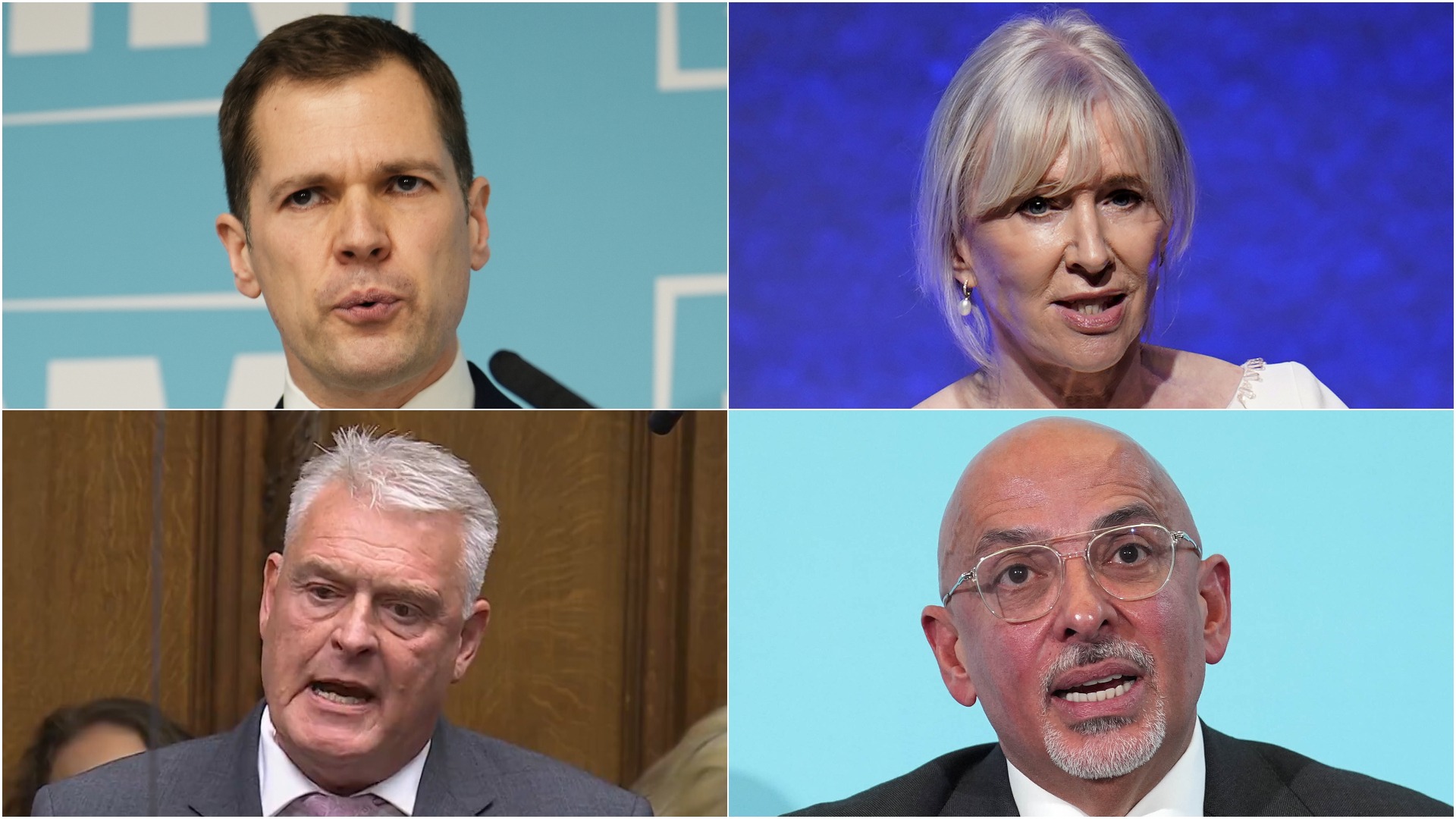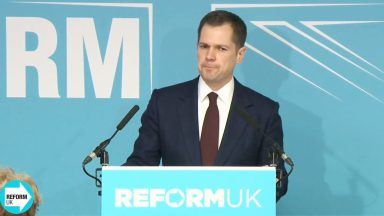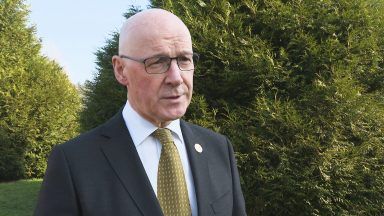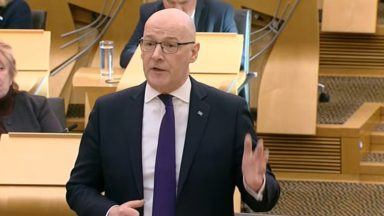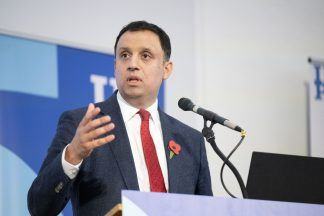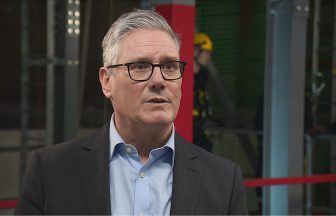Kate Forbes, Humza Yousaf and Ash Regan are all vying to replace Nicola Sturgeon as First Minister of Scotland.
Whoever wins the contest will become the sixth person to hold the position since the establishment of the Scottish Parliament in 1999.
But this is actually the SNP’s first leadership contest for almost 20 years.
Nicola Sturgeon stood unopposed to take over from Alex Salmond when he resigned the day after the 2014 independence referendum.
She became party leader at the SNP’s conference in Perth on November 14 that year and was officially elected First Minister the next day, defeating a challenge from Conservative leader Ruth Davidson.
It means the last time the SNP had an actual contest to lead the party was in 2004.
STV News takes a look back at that contest and the main issues of the day.
Build-up to the 2004 contest
John Swinney – who last week announced he is to resign as deputy first minister when a new leader is chosen – took the helm of the SNP in 2000.
Swinney put himself forward for the leadership, along with Alex Neil, after Salmond stood down following a series of high-profile fall-outs with party members.
With Salmond’s backing, Swinney defeated Neil to lead the SNP.
However, in 2003, doubts over his leadership led to a challenge from party activist Bill Wilson.
Swinney survived the coup by convincingly defeating Wilson. His authority had been damaged, however, and his time at the top was entering its final throes.
How was the 2004 contest sparked?
Swinney resigned as party leader in June 2004, following poor results for the SNP at the 2003 Scottish Parliament election and the 2004 European Parliament election.
He went on to become convener of the Scottish Parliament’s European and External Relations Committee.
Roseanna Cunningham was first to throw her hat in the ring for the leadership, quickly followed by Sturgeon and Mike Russell.
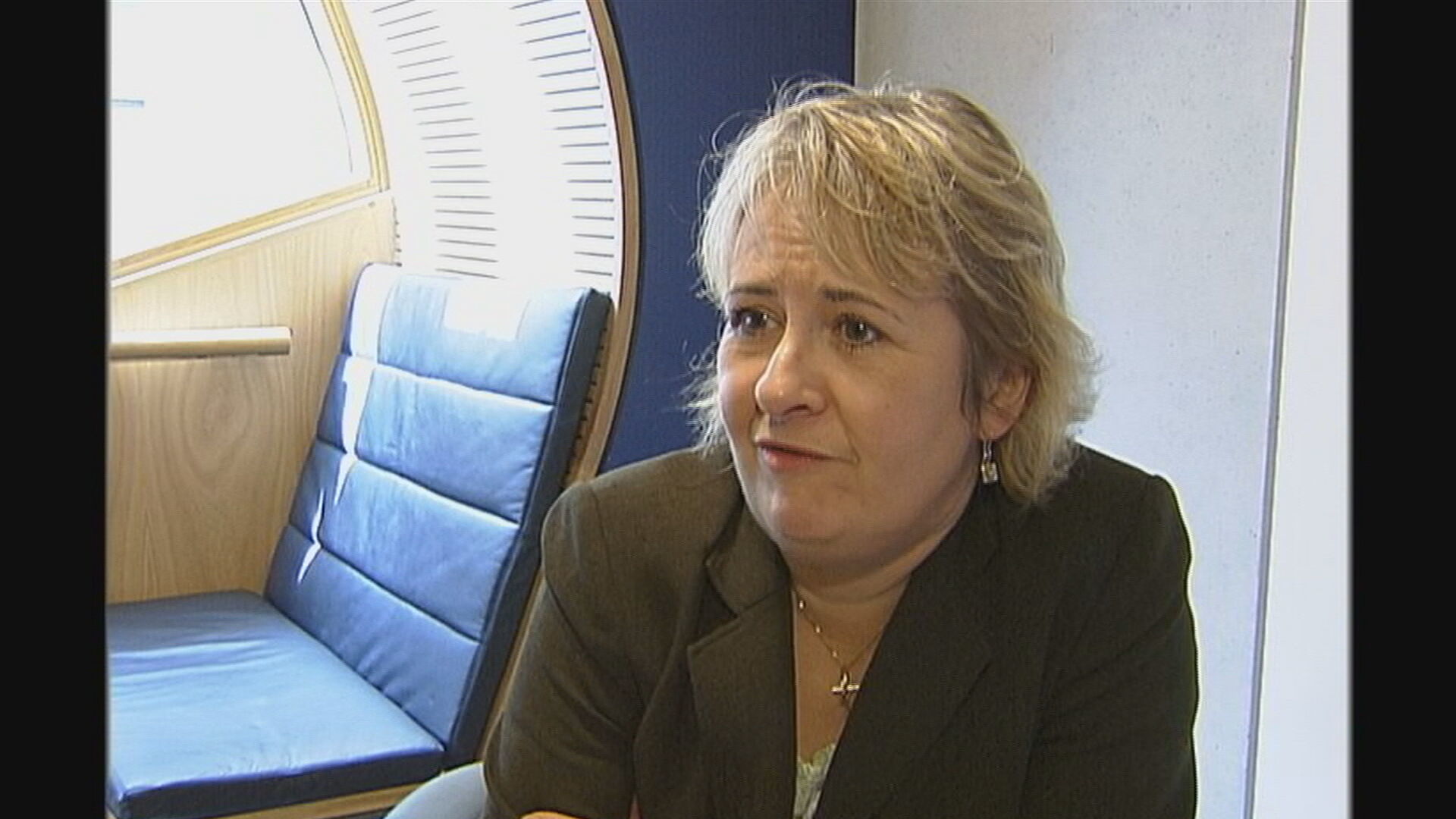 STV News
STV NewsFergus Ewing, Kenny MacAskill and Alex Neil all expressed interest but ultimately declined to stand.
Salmond belatedly announced he would enter the race despite having repeatedly denied any ambitions to run.
Most famously, Salmond quipped in June 2004: “If nominated, I’ll decline. If drafted, I’ll defer. And if elected, I’ll resign.”
He launched his campaign less than a month later, on July 15.
That decision led to Sturgeon withdrawing her interest in the top job, deciding to join him on a joint ticket and instead running for depute leader.
Salmond, Cunningham and Russell were announced as the three candidates on July 16, 2004, and for the first time were voted on by the entire SNP membership via a postal vote.
Salmond won by a landslide, collecting 4,952 votes (75.8 per cent), compared to Cunningham’s 953 and Russell’s 631.
Sturgeon won the depute leadership election.
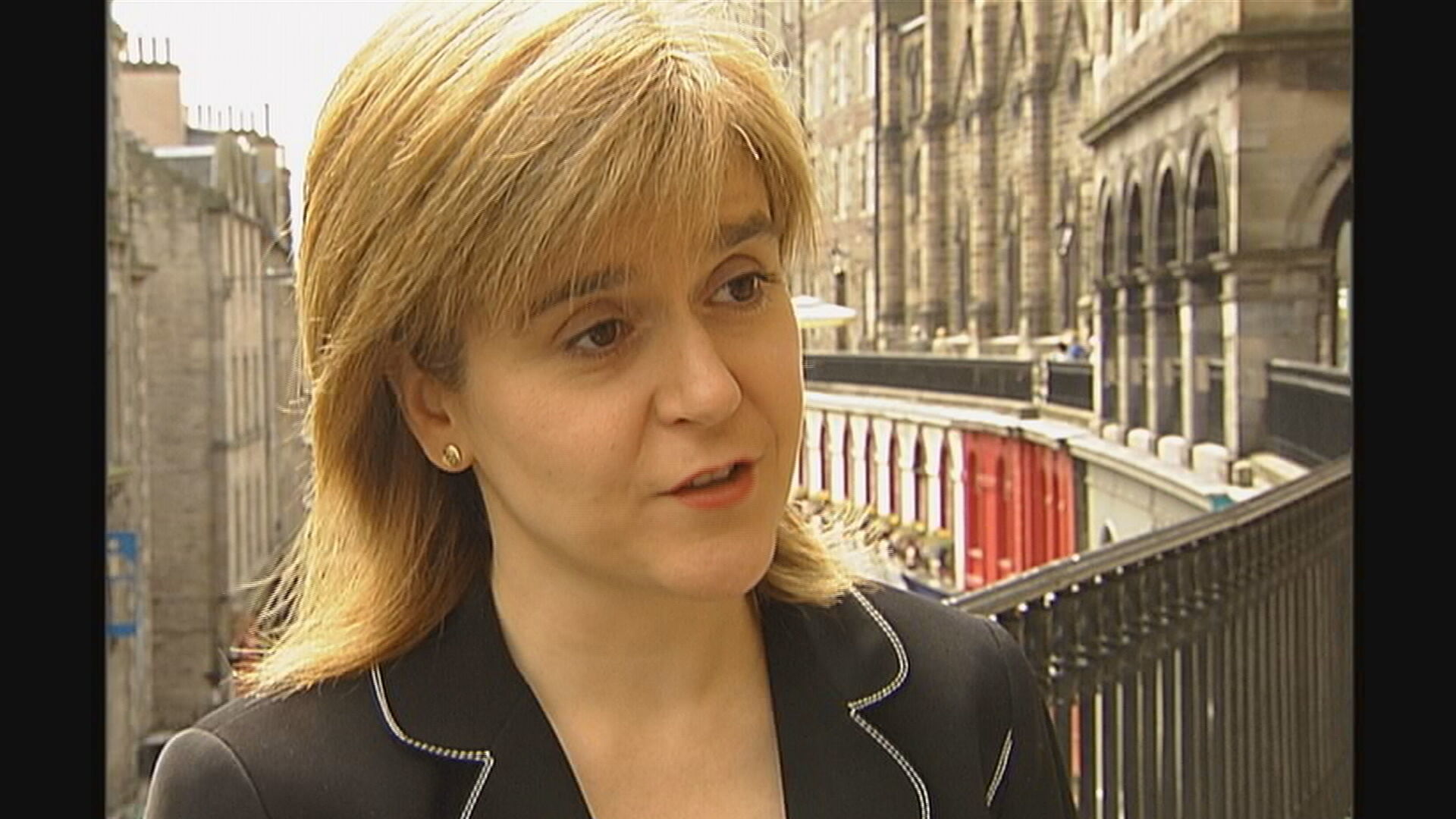 STV News
STV NewsWhat happened next?
Salmond was elected SNP leader for a second time, having previously served in the role between 1990 and 2000.
His second stint lasted from 2004 to 2014.
The landmark moment came in the 2007 Scottish Parliament election when the SNP won more seats than any other party. The SNP formed a minority government with the support of the Scottish Greens.
Salmond was elected to succeed Jack McConnell as First Minister on May 16, 2007 – a position he held until the day after the ‘Yes’ campaign lost the independence referendum.
Follow STV News on WhatsApp
Scan the QR code on your mobile device for all the latest news from around the country


